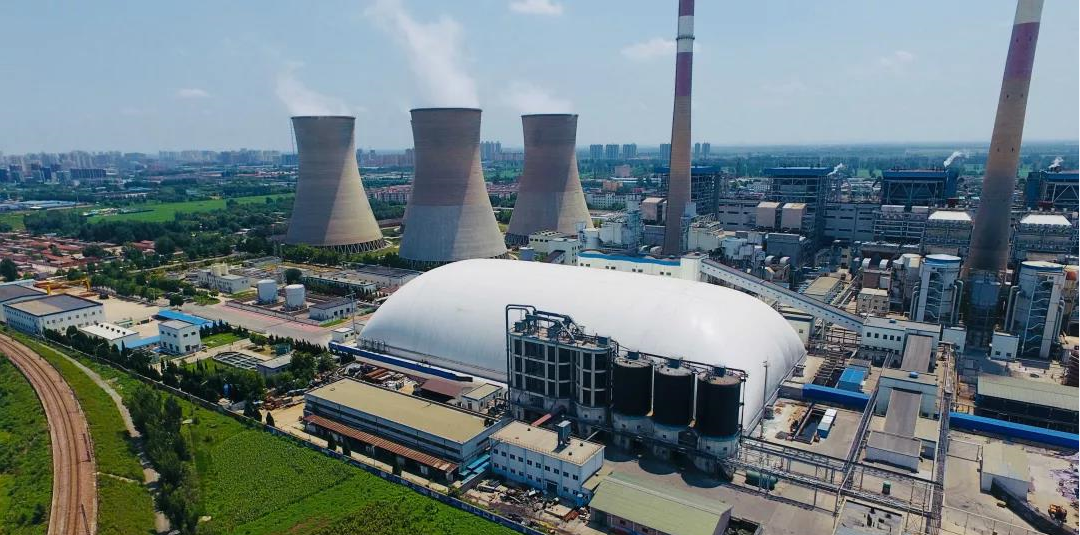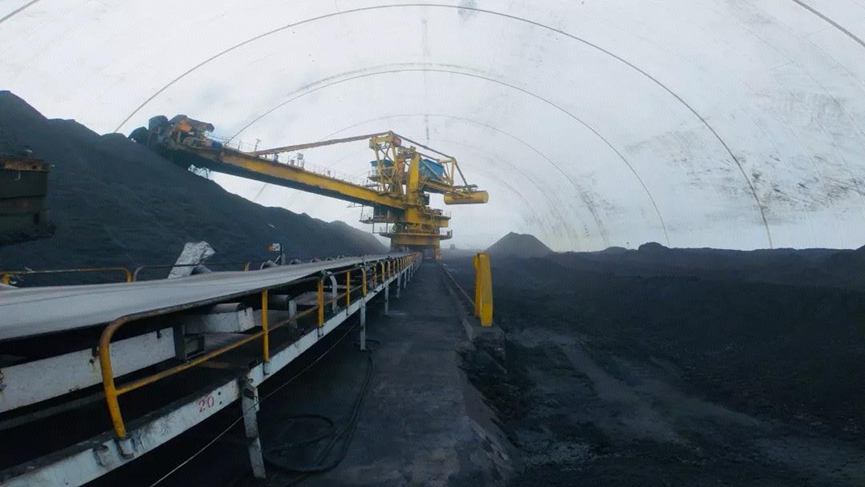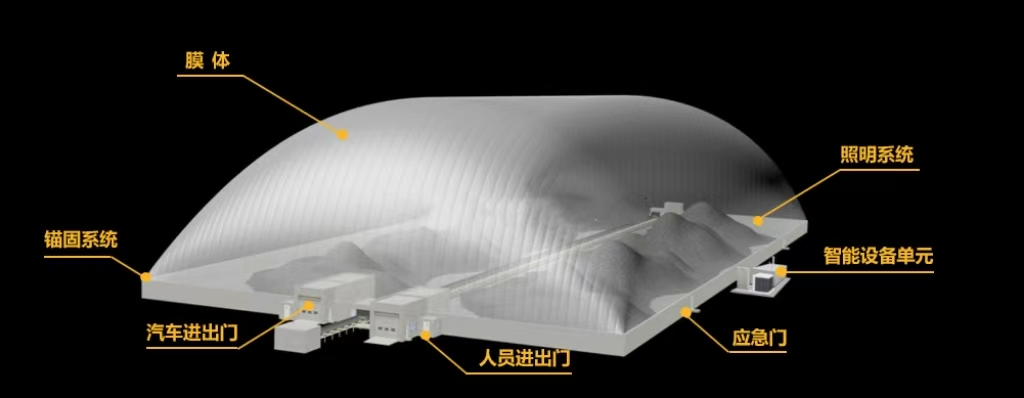As a globally mature building system, air dome structures (air-supported membrane structures) have nearly four decades of application history, widely implemented in North America and Europe. In the past decade, with the development of domestic construction technologies and upgrading of demands, air dome building have been applied in multiple fields, especially in the field of power plant coal sheds, demonstrating unique advantages.
With the increasingly strict environmental protection policies, the demand for closed renovation of power plant coal sheds continues to upgrade. From early primary measures such as windproof and dust suppression nets and windproof covers, it has gradually transformed to steel structure and full air-supported membrane enclosure, while the purification requirements for discharged gases have become more stringent. Air dome buildings have become an ideal solution for the construction of power plant coal sheds by virtue of their remarkable advantages. They can not only effectively solve many problems in the enclosure of coal sheds, such as windproof, dustproof, and anti-pollution, but also excel in space utilization, cost control, and environmental performance.
Significant economic advantages: When the span exceeds 80 meters, air dome buildings can save 20%-40% of the construction cost compared with steel structures; later operation only requires power for fans and lighting, without frequent anti-corrosion and maintenance costs, resulting in a lower comprehensive cost.
Ultra-long service life: The column-free design gives it excellent acid-base and corrosion resistance. Under normal use, the service life of air dome buildings can reach more than 20 years, far exceeding traditional solutions.


Air dome buildings use high-quality architectural fiber membrane materials as the "shell," creating positive pressure through intelligent electromechanical equipment that continuously supplies air to the interior. The building's main structure is supported by the pressure difference between the interior and exterior. This unique construction eliminates the need for traditional frameworks or beam-column supports, revolutionizing conventional architectural concepts and opening up new possibilities in the construction field.
Spacious Layout with Maximum Flexibility: Achieves large spans of over 120 meters (up to 180 meters), creating unobstructed internal spaces ideal for complex industrial processes and diverse operational requirements.
Rapid Construction with Green Technology: Utilizes modular on-site installation, significantly reducing construction timelines while eliminating construction waste, ensuring an eco-friendly and efficient build process.
Intelligent Operation & Safety Assurance: Equipped with smart control systems for real-time monitoring and adjustment of internal environments, enhancing safety and simplifying maintenance.
Energy Efficiency & Performance Excellence: Ultra-lightweight design (under 3 kg/m²) minimizes foundation requirements; low energy consumption with exceptional resistance to wind, snow, seismic activity, and settlement, ensuring long-term reliability and sustainability.
Precision Environmental Control: Optimized ventilation systems and advanced environmental monitoring enable precise regulation of temperature, humidity, and air quality, creating ideal conditions for operations and storage.
Reusable & Economical Flexibility: Easily disassembled and reassembled without damage, adaptable for permanent or seasonal use, maximizing resource efficiency and reducing lifecycle costs.
Windbreak Nets: Fail to address dust emissions and material loss; prone to corrosion in harsh environments (e.g., coastal areas, Xinjiang, Inner Mongolia). A project in Shandong’s coastal region showed severe rust after just 3 years, requiring main structure re-anti-corrosion treatment every two years.
Steel Structures: Susceptible to dual corrosion from external elements and internal coal yard gases. A 2011-built project required frequent material replacements after 9 years due to severe corrosion, resulting in high maintenance costs.

For projects prioritizing space, cost-efficiency, environmental protection, and safety, air-supported membrane buildings offer a superior solution through their technical advantages and exceptional performance. Choosing this innovative technology means embracing a future of efficiency, safety, and sustainability.

